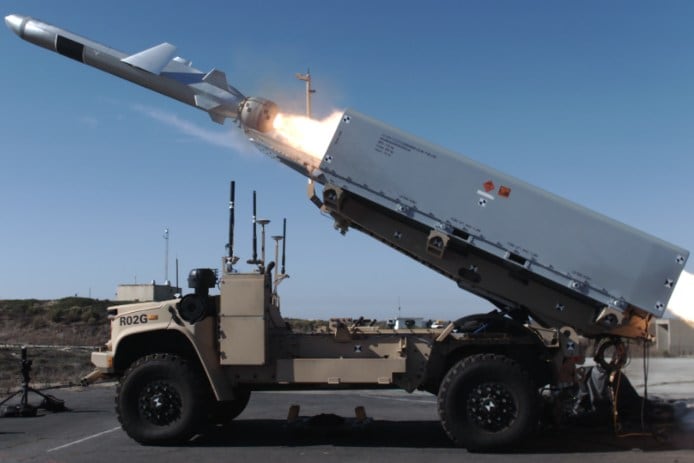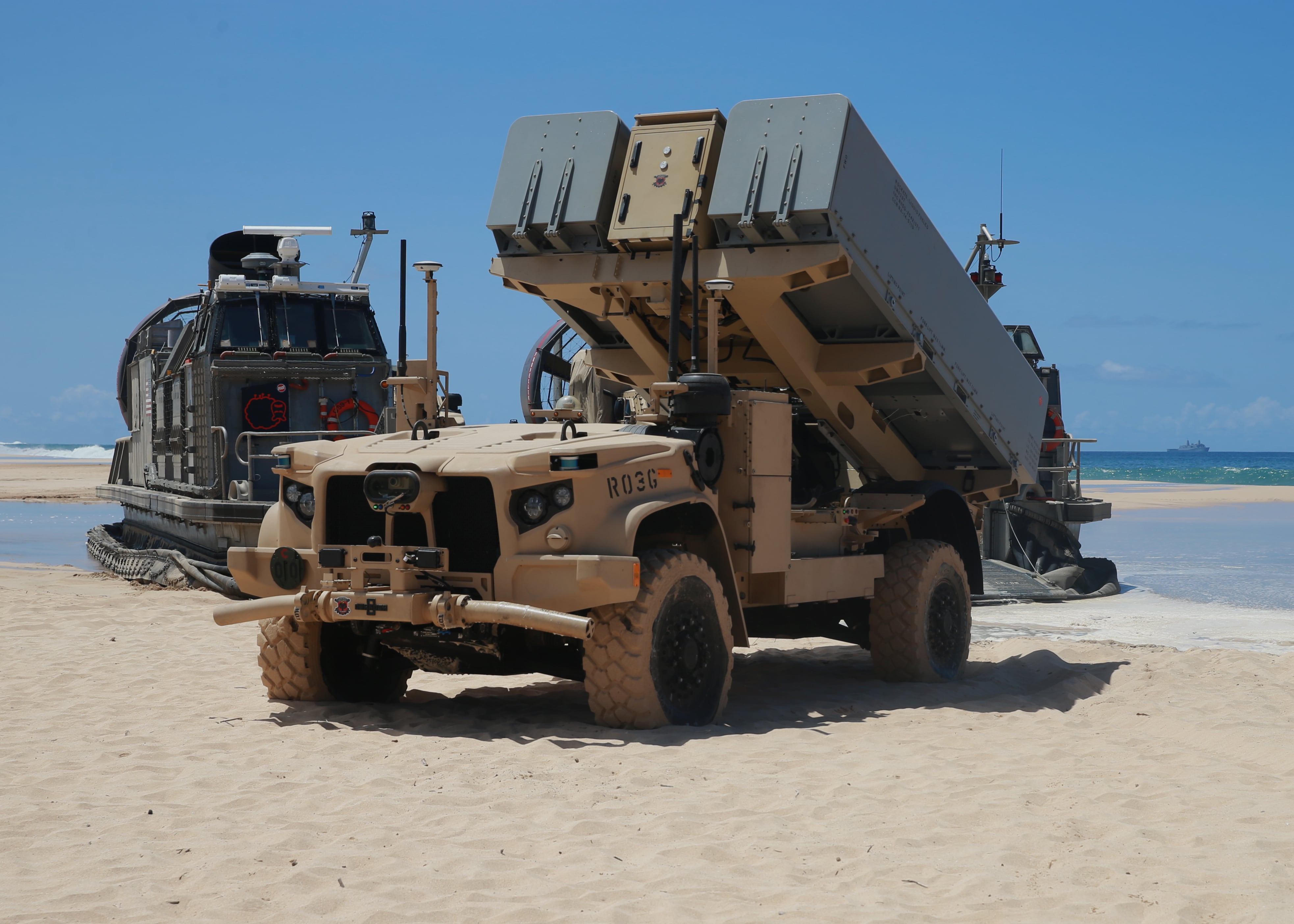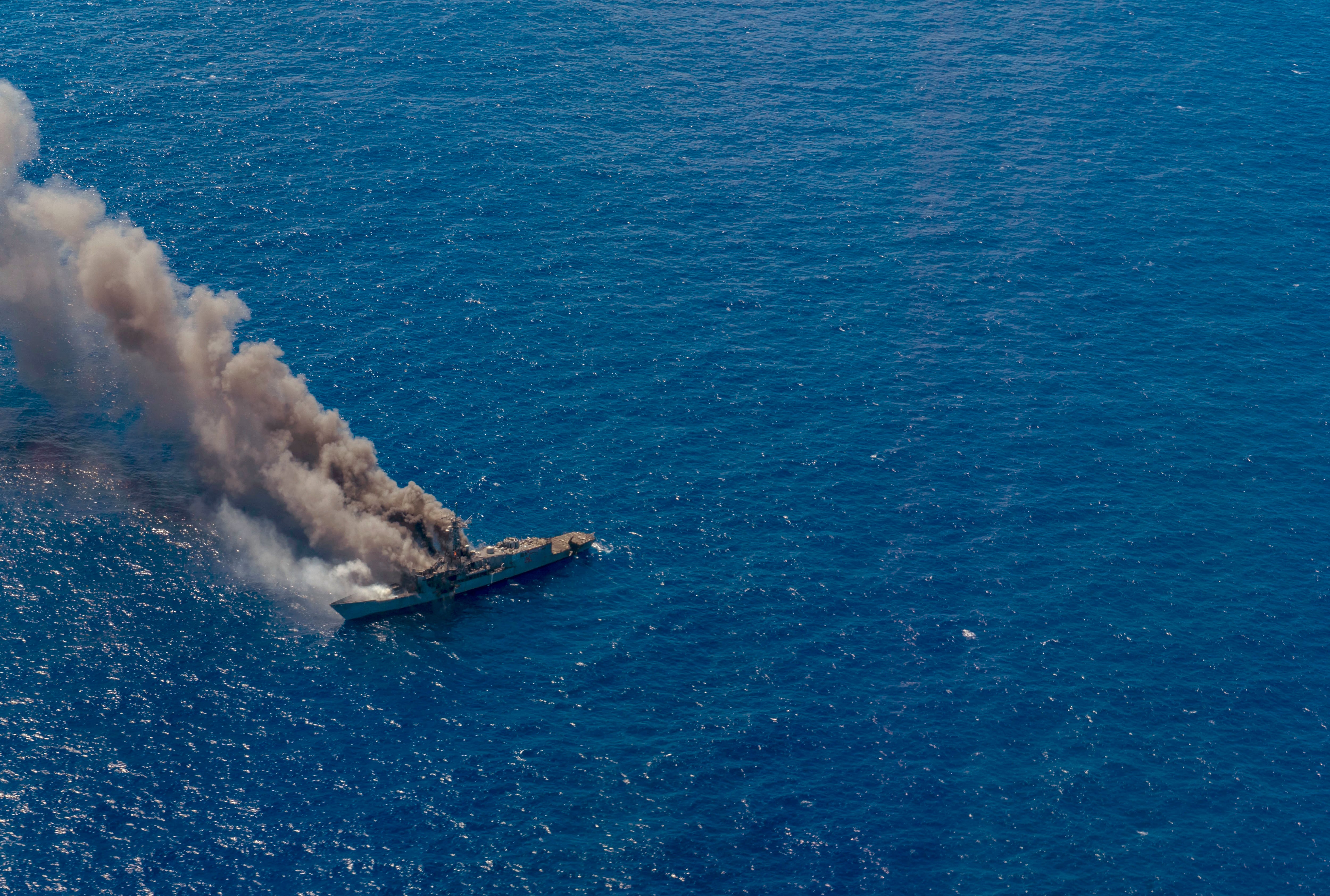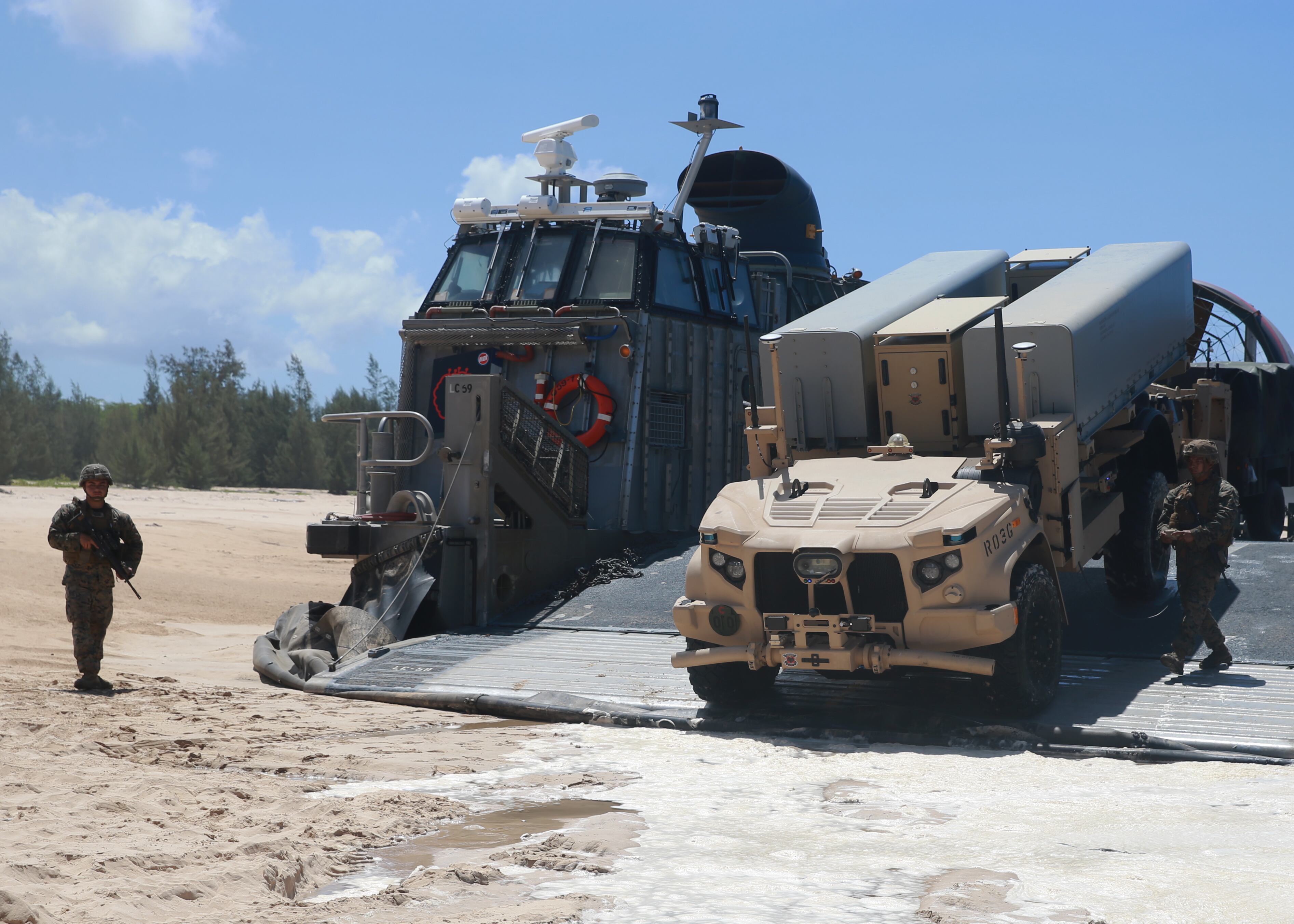Marines from 1st Battalion, 12th Marine Regiment, out of Marine Corps Base Hawaii did nearly everything but pull the trigger on the Corps’ newest ship-killing missile this past weekend.
But they won’t get to take this missile home with them.
That’ll be artillery Marines from 11th Marine Regiment at Camp Pendleton, California, who are scheduled to receive the Navy-Marine expeditionary ship interdiction system, or NMESIS, in October, said Joe McPherson, program manager for long-range fires at Marine Corps Systems Command.
RELATED

McPherson and Lt. Col. Ryan Collins, rockets and artillery capabilities integration officer Combat Development and Integration, spoke with media by phone about the weekend launch from Hawaii on Tuesday.
Marines did the first-ever load/offload of the system onto a Marine-flown C-130 out of VMGR-352 and landing craft air cushion, or LCAC. They also passed data for the successful firing. But since the system was still under testing, Systems Command staff did the actual shoot.
While McPherson and Collins couldn’t share too many details, they did confirm that the missiles traveled “in excess of 100 nautical miles.” And not in a straight line, either.

McPherson explained that one of the key features of the system is to allow for waypoint programming, that way the missile can operate in congested airspace, various terrain features and even friendly forces.
The Raytheon-made NSM carries a 500-pound warhead, according to the company’s website.
Each of the two fires from land struck the decommissioned hull of the former guided missile frigate Ingraham off the coast of the Hawaiian island of Kaua’i at the Pacific Missile Range Facility.
The Ingraham saw service from 1987 to 2015 and was involved in the 1991 response to the Mount Pinatubo eruption on Luzon, Philippines. The ship, alongside two others, also was involved in a provocation by high-speed Iranian boats approaching them in the Persian Gulf in 2008, according to Naval History and Heritage Command.

Others got their licks in, too:
- U.S. Third Fleet’s Carrier Strike Group One launched F/A-18E/F Super Hornets to test the Joint Standoff Weapon
- F-35C Joint Strike Fighters employed laser-guided weapons
- P-8A Poseidon maritime patrol and reconnaissance aircraft tested the Harpoon weapon system
- The fast-attack submarine USS Chicago (SSN 721) fired an UGM-84 anti-ship Harpoon missile and a Mark 48 Advanced Capability torpedo
- U.S. joint forces conducted coordinated multi-domain, multi-axis, long-range maritime strikes in the Hawaiian Islands Operating Area during the sinking of the decommissioned guided-missile frigate ex-USS Ingraham
- A division of F/A-18Cs from the VMFA-323 Death Rattlers took part in SINKEX, delivering precision lethal fires with AGM-84 Harpoons.
*Weapons engagement information provided by public affairs officers from U.S. Pacific Fleet and U.S. Marine Corps Forces, Pacific.
The exercise, the largest of its kind in more than 70 years, spreads out across 17 time zones and has more than 25,000 participants, all three Marine expeditionary forces and five numbered fleets, Maj. Jim Stenger, a Marine Corps spokesman, previously told Marine Corps Times.
The fire fit within the exercise but wasn’t part of any opposition force, operational training objective, Collins said.
“Our next stage is to get it more habitually in the hands of Marines,” McPherson said.
That means cannon-cockers with the 11th Marine Regiment will be the ones to help develop tactics, techniques and procedures that the rest of the fires field will likely follow as this system hits the fleet in the next few years.
The NMESIS is a combination of existing technologies: the Naval strike missile, and the remotely operated ground unit for expeditionary vehicle, of ROGUE, which basically is a remote-control joint light tactical vehicle.

McPherson and Collins said that the data from the fires, which were conducted, in part, by request from officials at Marine Corps Forces Pacific will help push the program forward.
The NMESIS program kicked off slightly more than two years ago in response to Marine Corps Commandant Gen. David Berger’s push to give the Marines an anti-ship missile capability, especially when firing from land to sea.
That tool fits into the larger initiative that Berger has laid out in which Marines will operate in small teams aboard and off the ship to thwart peer navies such as China by denying sea lane access and striking unseen at their vessels.
*Correction: The article has been changed to note that the C-130 aircraft was flown by Marines out of a Marine Corps unit.
Todd South has written about crime, courts, government and the military for multiple publications since 2004 and was named a 2014 Pulitzer finalist for a co-written project on witness intimidation. Todd is a Marine veteran of the Iraq War.





